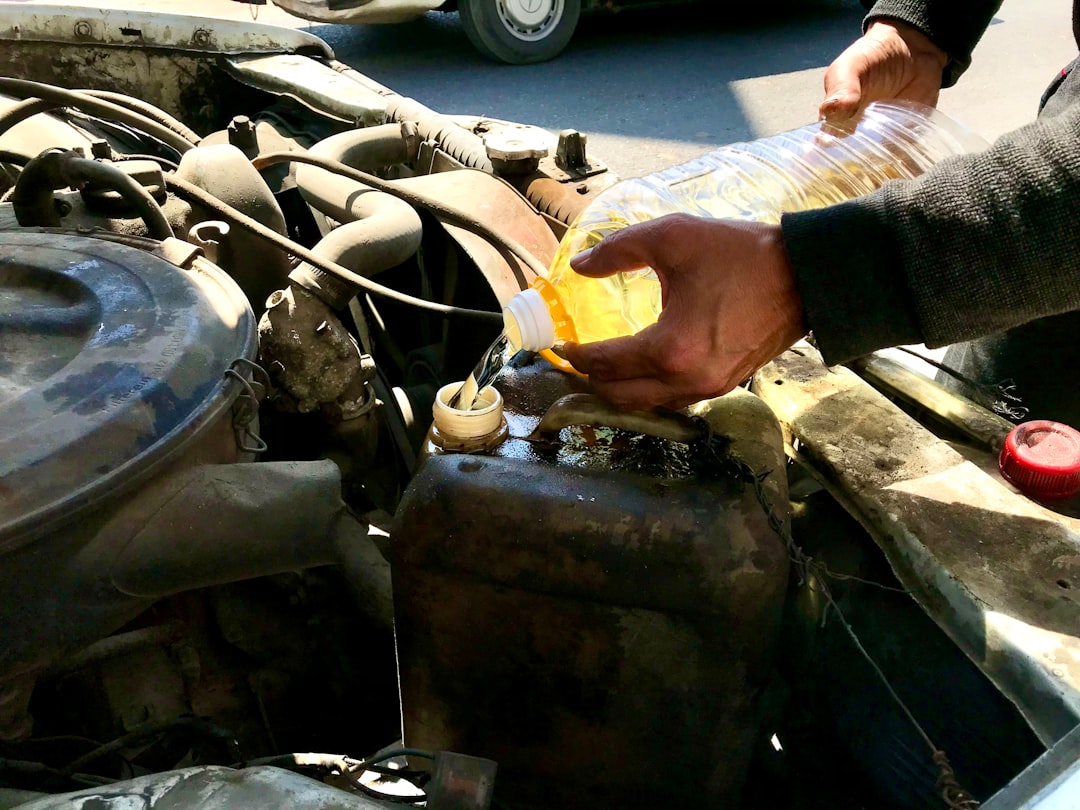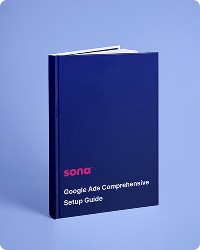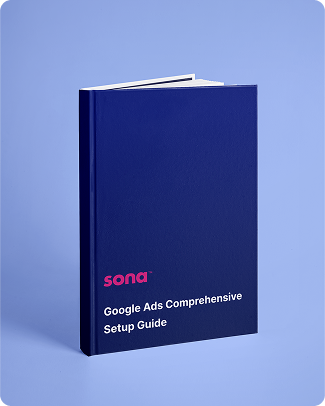

Engage prospects with a scan and streamline customer engagement with FREE QR code marketing tools by Sona – no strings attached!
Create a Free QR CodeFree consultation

No commitment

Engage prospects with a scan and streamline customer engagement with FREE QR code marketing tools by Sona – no strings attached!
Create a Free QR CodeFree consultation

No commitment
Today’s HVAC repair services market is rapidly digitizing, with customer expectations for speed, ease, and transparency at an all-time high. Despite ongoing investments in advertising and digital outreach, many service providers struggle to bridge the gap between physical touchpoints like technician visits, flyers, or equipment manuals and the digital channels that drive bookings, support, and follow-up care.
QR codes have emerged as a strategic tool for solving these critical disconnections, as outlined in QR codes in marketing. Whether it is losing high-value prospects because they are never logged in the CRM or missing opportunities simply because customer engagement signals go undetected, today’s HVAC businesses are seeking new ways to unify online and offline journeys seamlessly.
By implementing QR codes, HVAC organizations not only streamline appointment scheduling and diagnostics but also begin to close the gap on data visibility, converting anonymous interest into tangible leads, surfacing new upsell opportunities, and reducing the complexity of managing segmented customer bases. This guide explains how high-growth HVAC repair companies are embedding QR codes to elevate service delivery, personalize engagement, and drive measurable business performance.

One of the most persistent issues for HVAC companies is the breakdown between field operations and the data systems that power efficient service. Lost paperwork, incomplete service logs, and slow manual handoffs often mean promising leads go missing and critical customer details are never captured. QR codes bridge these gaps by enabling real-time, trackable actions that sync directly to digital workflows, as detailed in Sona QR’s product overview.
Replacing analog workflows produces immediate gains. Instead of paper service logs, technicians scan a QR on the unit to pull up maintenance history and submit digital notes. Rather than handing over static brochures, teams use QRs that link customers to dynamic guides, troubleshooting flows, and booking forms. By meeting customers where they interact with your business in the physical world, you convert moments of interest into measurable actions.
Today’s QR management platforms, such as Sona QR, support these steps with centralized dashboards. HVAC companies can auto-update records, segment audiences by behavior, and identify at-risk accounts that require proactive outreach or targeted follow-up, all while reducing manual data entry and delays.

HVAC repair services frequently suffer from disconnected customer experiences. A customer may keep an appointment card on their fridge or skim a mailed brochure, yet without a direct path to digital action, intent remains invisible. This lack of visibility leaves potential leads unknown and valuable follow-up opportunities lost. QR codes solve this by transforming passive materials into active gateways. With one scan, customers can schedule visits, submit support requests, register warranties, or read maintenance tips, while the business captures the engagement in real time, as noted in Sona QR’s HVAC guide.
Speed and simplicity also matter in the field. No one wants to download an app just to request a repair or review a warranty. QR codes work instantly with built-in smartphone cameras, which reduces friction for both technicians and customers. The result is fewer missed forms, fewer unlogged interactions, and faster responses across the board.
Real-world examples include QR codes on van decals that route directly to emergency repair requests, and QR labels on indoor units prompting warranty registration. Every scan becomes a measurable signal of intent, helping HVAC providers prioritize follow-up and improve service outcomes.

HVAC teams need QR formats that match real workflows, both in the field and at the office. The best formats are versatile, easy for customers to use, and simple for staff to manage. Selecting the right type also ensures that your scans deliver immediate value rather than adding steps.
Dynamic codes are especially valuable because they allow you to change destinations over time and capture analytics. Static codes still have a place for stable resources that will not need edits, such as a general safety guide or a long-lived installation manual. The mix typically depends on how often your content changes and how much data you need to capture.
With a platform like Sona QR, you can generate and manage all formats in one place, assign codes to campaigns or assets, update destinations anytime, and push scan events to your CRM and dispatch systems.

Growth often stalls when physical assets fail to create measurable digital actions. Flyers with generic URLs, word-of-mouth referrals without follow-up, and invoices that do not invite feedback all contribute to missed opportunities. QR codes transform these materials into conversion-ready entry points that capture intent in the moment it appears.
Assess where your customer encounters your brand in the real world, then make those surfaces scannable. Tie each scan to a specific outcome such as scheduling, review generation, or plan enrollment. Over time, you will see which placements and messages drive the most value so you can concentrate spend and effort where it counts.
Regularly review scan volume, conversion rates, and downstream revenue by placement. This reveals high-ROI assets and informs decisions about creative, messaging, and geographic targeting.

HVAC teams win when every interaction creates value for the customer and data for the business. QR codes help operationalize this by turning static surfaces into smart, trackable moments across common service workflows. When thoughtfully deployed, these codes reduce diagnostic time, speed up scheduling, and drive more reviews and renewals.
Start with use cases that fix real pain points in your operation: slow bookings, low review rates, or lost service notes. Then expand to experiences that enrich the customer lifecycle such as warranties, maintenance plans, and upgrade education.
Each use case replaces a static, easily forgotten step with a scan that logs the interaction and invites the next action. Over time, you build richer customer profiles and more predictable pipelines.
Every scan is a behavior signal that reveals intent, context, and urgency. By deploying unique QR codes across touchpoints, you can segment audiences automatically, then retarget with messaging that fits their stage and needs. This reduces wasted spend on cold audiences and increases conversions by focusing on people who already raised their hands.
Sona is an AI-powered marketing platform that turns first-party data into revenue through automated attribution, data activation, and workflow orchestration.
In HVAC, useful distinctions include homeowners vs. property managers, residential vs. commercial, and emergency needs vs. planned maintenance. These categories correlate with different urgency, budgets, and decision cycles. Tag scans accordingly and you will create lists that sales and marketing can work with precision.
With Sona QR, each code becomes a smart entry point that captures context, enriches contact records, and triggers workflows automatically. You move from guesswork to data-driven retargeting based on real behavior, as outlined in Sona’s Playbook Intent-Driven Retargeting.
QR codes function as connectors across offline and digital campaigns. They let you measure historically opaque channels such as print, vehicles, and on-site signage. More importantly, they unify the customer experience: the same code that a customer scans on an invoice can guide them to a renewal plan, then tag their CRM record for a targeted seasonal reminder.
Think of QR codes as the offline onramp to your digital engine. With centralized management, you can test creatives, compare placements, and reallocate spend according to performance rather than assumptions. For broader strategy, see this HVAC marketing blend.
A platform like Sona QR lets you manage all of this in one place, monitor performance, and sync scan data into your CRM, scheduling, and analytics tools for a complete view of impact.
Start by identifying where your business loses data or momentum. Common examples include on-site paperwork that never reaches the CRM, quotes that go untracked after delivery, and feedback requests with low response rates. Select a QR use case that solves a tangible problem for both teams and customers, such as instant post-service feedback capture or emergency booking.
Choose static codes for evergreen content that will not change, such as safety instructions or a general service overview. Use dynamic codes when you need tracking, destination updates, or A/B testing. Dynamic codes are ideal for campaigns, seasonal offers, and any workflow you plan to optimize over time.
Invest time in design so users know exactly what they get when they scan. Add your logo, brand colors, and a clear frame. Include a benefit-led CTA directly beneath the code, and ensure size, contrast, and quiet zones meet scanning best practices.
Prioritize touchpoints where data gaps are most harmful. Start with equipment assets, direct mail, job cards, and invoices, then expand to vehicles and uniforms. Adapt size and placement to each environment so scanning feels natural and safe.
Measure performance from scan to outcome. Use analytics to see which placements drive the most scans, which codes convert best, and where drop-offs occur. Feed learnings back into creative, CTA, and placement choices.
A persistent frustration across HVAC providers is the inability to connect offline marketing activity to revenue. QR codes change that by recording each scan along with the context that matters. When tied to booking and billing systems, you can see the complete path from first scan to closed invoice, including repeat engagement and upsells. For methodology, read Sona’s blog post Single vs Multi-Touch Attribution Models.
This transparency enables more accurate budgeting and sharper campaign design. Instead of guessing which mailers worked or which neighborhoods responded, you allocate resources based on data. You also equip sales and dispatch teams with timely intent signals so they can prioritize follow-up with leads most likely to convert.
With Sona QR and Sona.com, you can go beyond engagement counting to full-funnel attribution. Identity resolution and multi-touch modeling let you connect scans to known contacts, evaluate assisted conversions, and forecast impact with confidence.
Scaling QR impact requires consistency, education, and automation. Teams should treat codes as always-on infrastructure rather than a one-off campaign. When every physical surface carries a relevant QR and every scan routes to a well-designed digital step, you multiply opportunities to capture demand and reduce operational waste.
Educating both staff and customers is essential. Technicians should understand the value proposition behind each code so they can explain benefits in the moment. Customers should know what they will get after scanning, which increases trust and scan rates.
Implementing these practices produces richer data, smoother journeys, and more consistent conversions across seasons and service types.
Leading HVAC providers are already using QR codes to scale engagement and capture demand during busy seasons. The most successful examples pair strong CTAs with placements that meet customers in their moment of need. These deployments transform everyday materials into conversion engines that feed the CRM with clean, actionable data.
Creative touches also make a difference. Codes that promise instant value perform better than generic links. Visual frames, benefit text, and straightforward instructions inspire confidence and remove uncertainty.
These examples illustrate how QR strategies convert operational pain points into growth. You reduce friction for customers, capture intent as it happens, and create a repeatable system for revenue generation.
Successful QR programs combine thoughtful design, smart placement, and clear value exchange. The best campaigns tell customers exactly what they will gain and deliver it instantly. Teams that treat QR codes as first-class touchpoints see them become indispensable to daily operations and marketing.
Common pitfalls often relate to accessibility and relevance. Codes hidden under panels, printed too small, or leading to generic homepages undermine trust and waste attention. Avoid these mistakes with disciplined standards and regular audits. For industry context, this overview of HVAC QR adoption outlines how contractors are leveraging scannable experiences in the field.
QR codes have become an indispensable tool for HVAC repair businesses striving to bridge the gap between physical service delivery and digital customer engagement. By embedding QR codes at every stage of the customer journey, whether to capture new leads, personalize follow-ups, or enrich CRM data, providers transform each interaction into a unique opportunity for growth and insight.
This connected approach generates clear-cut advantages: from closing data gaps that let high-value prospects slip away, to surfacing customer signals for timely upsells, to delivering more consistent messaging and improved ROI across channels. Ultimately, QR codes empower HVAC teams to maximize their reach, streamline workflows, and build deeper, data-driven relationships at scale.
With technology offering new paths to unify on-site and online touchpoints, HVAC repair companies that embrace QR strategies are not just keeping pace, they are leading market innovation and creating lasting differentiation in a competitive landscape. If you are getting started, generate your first dynamic code with Sona QR, connect it to a scheduling page or survey, and watch how quickly real-world engagement turns into measurable results. Start creating QR codes for free.
QR codes have transformed HVAC repair services from traditional, paper-based workflows into seamless, real-time support systems for technicians. Whether it’s accelerating service dispatch, providing instant access to equipment manuals, or enabling faster diagnostic processes, QR codes streamline operations and enhance technician efficiency on every job site. Imagine technicians scanning a code to instantly access repair histories or troubleshoot complex systems without delay—maximizing uptime and customer satisfaction.
With Sona QR, you can create dynamic, trackable QR codes that update instantly, eliminating the need for reprinting and ensuring your team always has the latest information at their fingertips. Every scan captures valuable data, helping you optimize technician workflows and connect service quality directly to customer retention and revenue growth. Start for free with Sona QR today and empower your HVAC repair services to deliver smarter, faster, and more profitable technician support.
Choose an HVAC repair service that uses QR codes to streamline appointment scheduling, diagnostics, and capture customer engagement data in real time to ensure reliable and transparent service.
Common issues include lost paperwork, incomplete service logs, and slow manual handoffs; QR codes help by digitizing service histories, enabling instant access to manuals, and syncing data directly to digital workflows.
The article does not provide specific cost information for HVAC system repairs.
The article does not detail specific signs for HVAC repair needs but emphasizes using QR codes for quick diagnostics and service requests.
Use QR codes placed on equipment panels to access maintenance histories, filter replacement recommendations, and digital service checklists to keep your HVAC system well maintained and reduce repair frequency.
QR codes transform passive materials into active digital gateways that enable instant booking, support requests, warranty registration, and maintenance tips while capturing customer engagement data.
Dynamic QR codes are ideal for campaigns needing updates and analytics, while static codes suit stable resources like safety guides; formats include web links, vCards, SMS/email prefills, Wi-Fi access, and app downloads.
Place QR codes on technician uniforms, service vehicles, equipment labels, direct mailers, invoices, job site signage, and brochures to convert physical touchpoints into measurable digital actions.
QR codes replace paper logs with digital notes, provide instant access to maintenance history and manuals, and sync data directly to CRM systems, reducing errors and speeding up diagnostics.
They can measure scan volume, conversion rates, time-to-diagnosis, post-visit feedback, and revenue attribution through integrated analytics dashboards that connect QR interactions to bookings and sales.
Use high-contrast designs, include clear benefit-led CTAs, ensure codes are large enough to scan easily, place them in accessible locations, and test them under real-world conditions before deployment.
By deploying unique QR codes tagged by action, location, and intent, companies can segment customers automatically and retarget them with personalized messages through CRM and advertising platforms.
Avoid placing codes in hard-to-scan locations, using vague CTAs, linking to generic homepages, and failing to educate technicians and customers about the benefits and usage of the QR codes.
QR codes act as bridges connecting print materials, vehicles, and signage to digital booking, feedback, and upsell pages, enabling measurement and optimization across multi-channel campaigns.
Identify use cases, choose static or dynamic codes, design and test codes with clear CTAs, deploy across high-impact channels, and track performance to optimize campaigns continually.
Yes, QR codes on vehicles and uniforms can route customers directly to emergency booking pages or prefilled messages, facilitating quick and easy repair requests.
Use Sona QR's trackable codes to improve customer acquisition and engagement today.
Create Your FREE Trackable QR Code in SecondsJoin results-focused teams combining Sona Platform automation with advanced Google Ads strategies to scale lead generation

Connect your existing CRM

Free Account Enrichment

No setup fees
No commitment required

Free consultation

Get a custom Google Ads roadmap for your business






Launch campaigns that generate qualified leads in 30 days or less.
